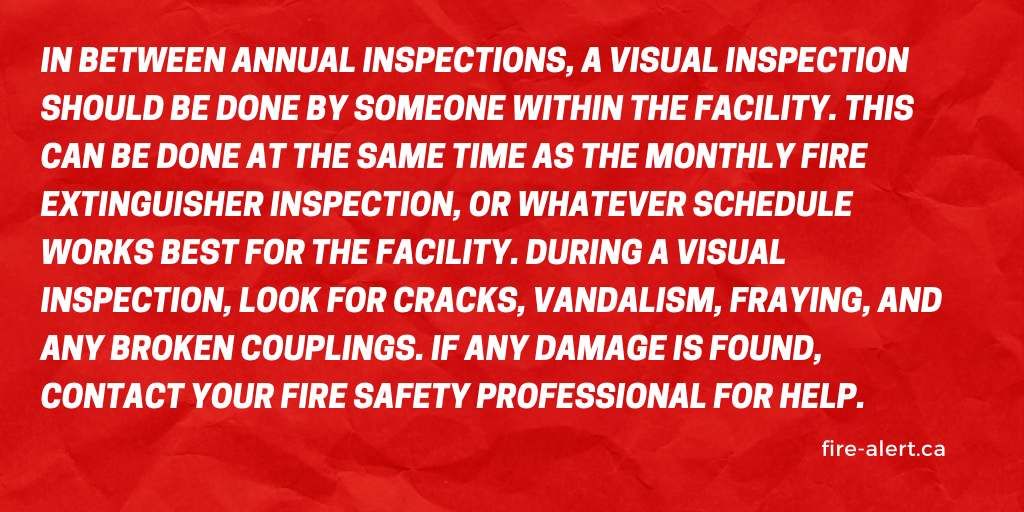What Is An Occupant Use Fire Hose and Does It Need to be Inspected?
While you may have heard of the term “occupant use fire hose”, you may be unclear on exactly what this is, how often it needs to be inspected, and if you even have one! We’re going to take a look at exactly what an occupant use hose is, and the precautions you need to be taking to make sure it’s in working order in the event of an emergency.
What Is An Occupant Use Fire Hose?
Occupant use fire hoses are fire hoses that are stored within a building – but what are they used for? Are they meant solely for the occupants of the building to use, or are they there for the fire department’s use?
Occupational Health & Safety expands on what these occupant use hoses are and are not used for:
“Within the fire industry and NFPA standards, the small hoses inside facilities are typically referred to as “Occupant Use Hoses.” The use of this terminology is not by coincidence, as the name actually indicates the professional fire service’s opinion of these hoses. The hoses inside a facility are specifically for the use of the building occupants, not the fire department. Very seldom if ever will public fire departments plan to or actually use hoses owned and maintained by someone other than themselves. They will use the hose drops to connect their own hoses, but the actual hoses are typically off limits. As the Occupant Use Hoses are just that, for occupant use, it is important to determine the uses available within the facility.”
Self Inspections
Although self inspections do not take the place of a professional inspection, they are still necessary in order to ensure that an unexpected issue did not occur.
Koorsen Fire & Security tells us why self inspections should still be conducted in between annual inspections:

Professional Inspections
As with any fire detection or fighting equipment, your occupant use fire hose may be vitally important in the case of a fire. This is why ensuring that you are having your hose regularly expected is incredibly important should an emergency arise.
A1 Sprinkler & Systems Integration expands on how often you should be having your fire hose inspected professionally:
“Every year, or after any use, you should have your fire hose inspected by a professional for a visual hose, nozzle and coupling inspection. During this inspection, your Life Safety Partner will unrack, unreel/unroll and physically inspect your hose to determine that the hose, couplings, and any nozzle have not been vandalized, they are free of debris, and exhibit no evidence of mildew, rot or damage by chemicals, burns, cuts, abrasion or vermin. They will also check that nozzle controls and adjustments operate properly, inspect gaskets for presence, tight fit, and deterioration, and couplings for damage, corrosion, and rotation.”
Our Fire-Alert experts test and inspect hoses to the most current NFPA standards and current Fire Code rules. When you allow Fire-Alert to annually inspect your hoses and to perform hydrostatic tests when required, you are able to give your employees and building occupants both protection and peace of mind. Contact us using our contact form to book an appointment.